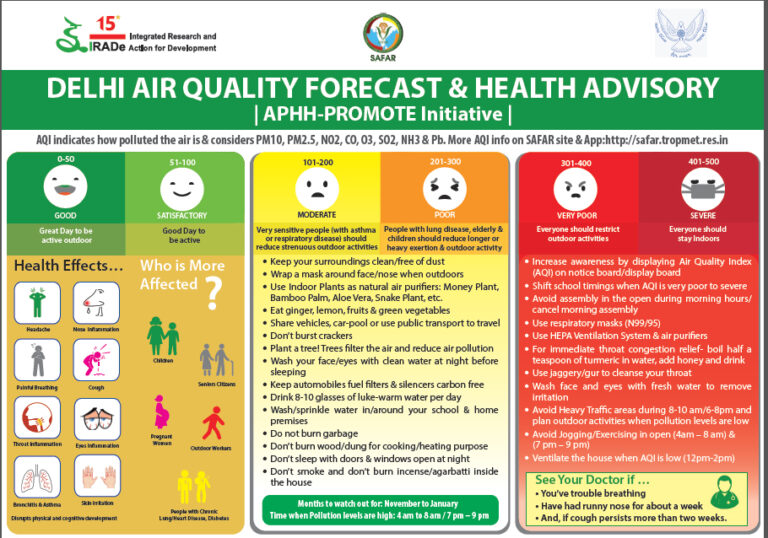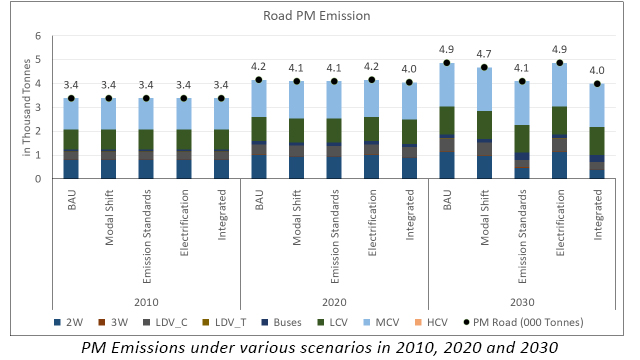Duration: October 2017- March 2022 (Ongoing).
Supported by: Ministry of Earth Sciences (MoES)



IRADe has developed a model to project energy consumption and emissions from the transport sector and demand and supply policy options for mitigation of long-term emissions. Some of the mitigation strategies that can be analysed using the developed model are: (i) Shift from private to public transport within road; (ii) Shift from road to rail/metro; (iii) Fuel efficiency with projected cost numbers of future efficient vehicles; (iv) Introduction of EVs; (v) Use of alternate fuels; and (vi) Reduction in transport demand.
The model parameters were calibrated and current emissions projections made consistent with the latest SAFAR (System of Air Quality and Weather Forecasting And Research) report. Based on the calibrated model, the emission intensity of Delhi, NCT, under the Business as Usual (BAU) scenario is the highest, as no policy interventions & technological improvements are undertaken after 2015. Emission intensity under the Fuel Efficiency scenario was found to be the lowest as the efficiency of the vehicle has improved under further iteration of Auto Fuel Policies. The impact of electrification in
2030 was not found to be substantial as the considered percentage of sales target in public and private vehicles accounts to a very small share of electric vehicles on road compared to conventional Internal-Combustion Engine (ICE) vehicles.
